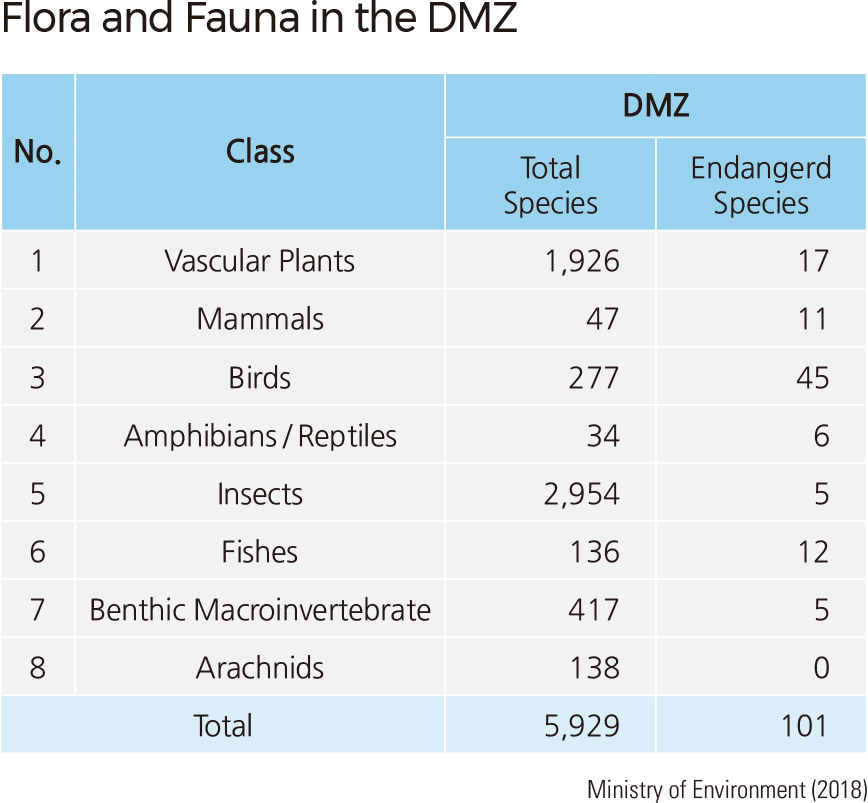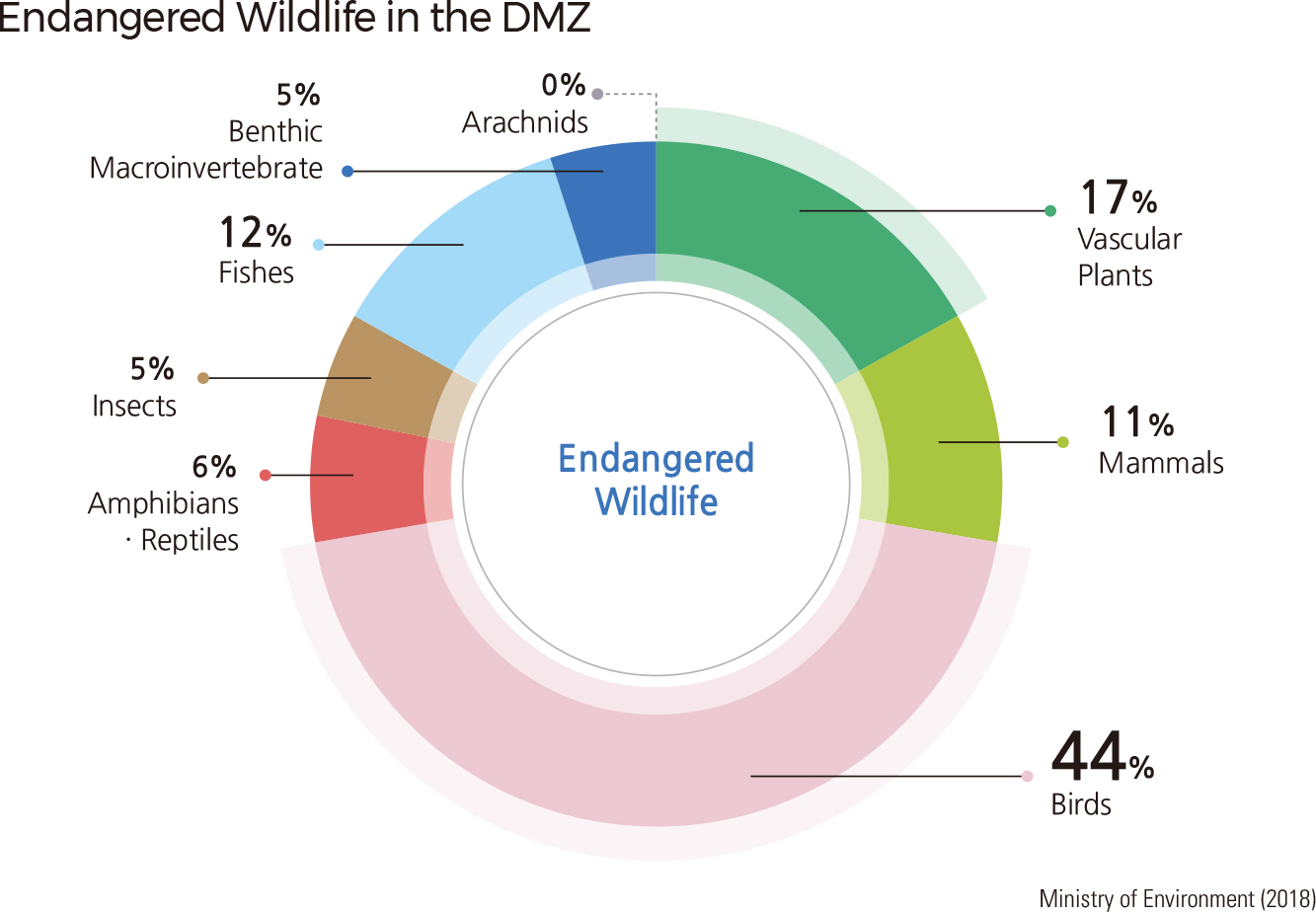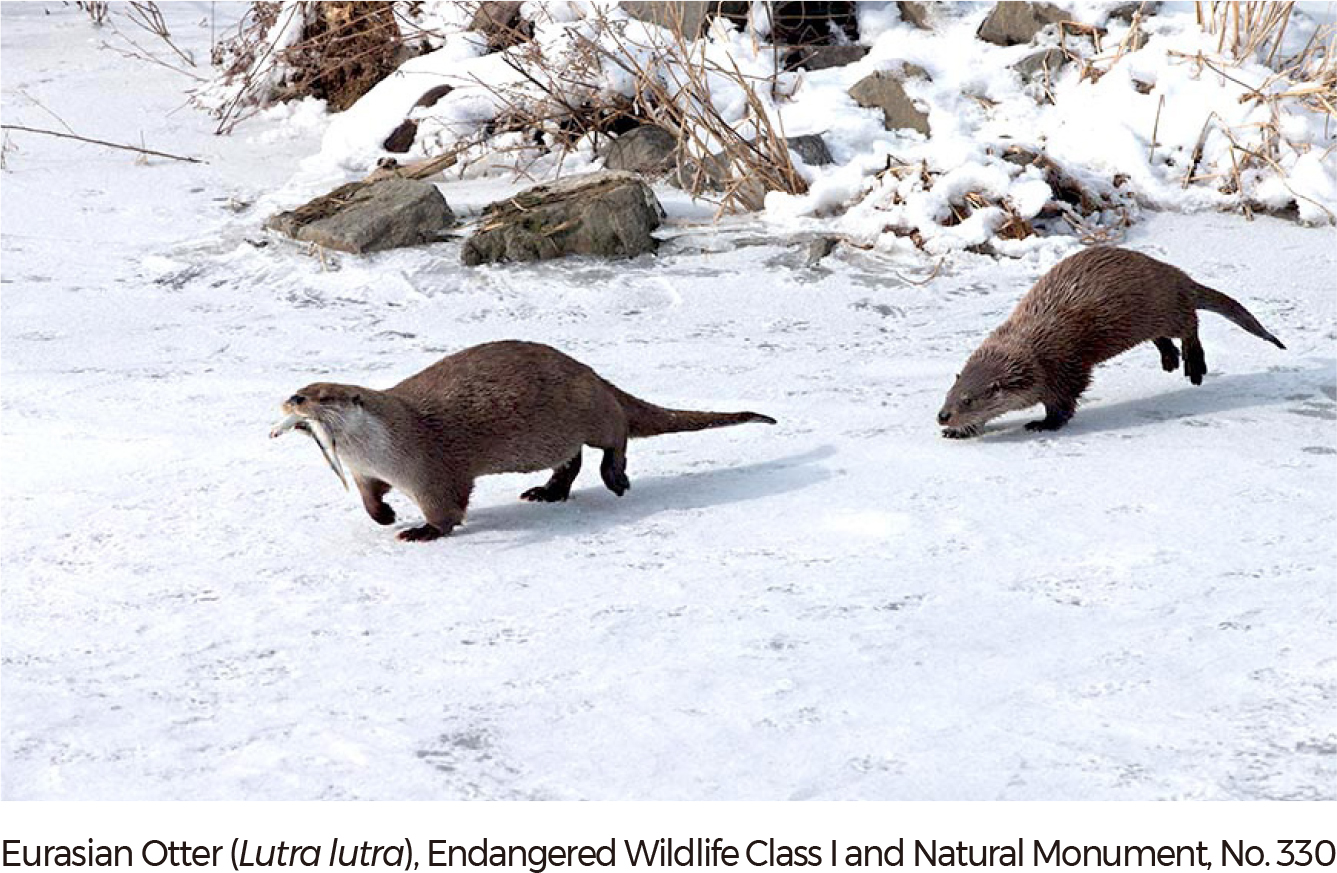Comprehensive Edition 2022
The Demilitarized Zone (DMZ) of the Korean Peninsula was established by the provision of the Korean Armistice Agreement in 1953. Since the end of the war, the DMZ has become a nature preserve, where human access is restricted. It represents a contiguous ecological belt that crosses the Korean Peninsula from east to west.
Ecosystems in the DMZ, which include habitat for rare animals and plants and the international flyway of various migratory birds, play an important role in conserving biological diversity. The DMZ region has a high density of Endangered Wildlife and Natural Monument species, such as the Asiatic Black Bear, the Leopard Cat, the Siberian Musk Deer, Korean Goral, and the Eurasian Otter. Streams and wetlands are well developed around the DMZ, displaying diverse and abundant species of fish.
The eastern mountainous region of the DMZ intersects the Baekdudaegan, and the eastern and western ends meet the sea. Therefore, diverse ecosystems appear in the DMZ, including forests, marine ecosystems, rivers, wetlands, and valleys. The western region of the DMZ is inhabited by wetland birds, such as the White-naped Crane and Black-faced Spoonbill. The central region of the DMZ is a wide plain that provides wintering areas for the Red-crowned Crane. The eastern mountainous region is inhabited by the Siberian Musk Deer and Korean Goral.
The Red-crowned Crane visits Cheorwon-gun, Paju-si, Ganghwa-gun, and Yeoncheon-gun for wintering. The Siberian Musk Deer and Korean Goral inhabit the eastern rocky mountainous region of the DMZ. The Siberian Musk Deer is especially low in population, inhabiting only the regions of Hwacheon-gun and Yanggu-gun.
A total of 5,929 wildlife species have been identified in the DMZ, including 2,954 insect species, 1,926 plant species, 417 benthic macroinvertebrates species, 277 bird species, 138 spider species, 136 freshwater fish species, 47 mammal species, and 34 amphibian/reptilian species. |










